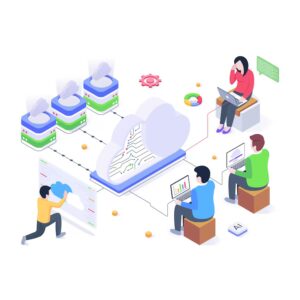Home Case Study Driving User Engagement and Decision-Making Through Customizable Analytics in Healthcare Technology
Healthcare
Driving User Engagement and Decision-Making Through Customizable Analytics in Healthcare Technology

Focus Areas
Custom Analytics Development
User Engagement
Healthcare Technology

Business Problem
A healthcare technology platform serving providers, payers, and patients struggled with low user engagement and inconsistent utilization of analytics features. Though the platform offered a broad set of metrics, they were rigid, difficult to navigate, and misaligned with users’ roles and daily needs. This limited the ability of care teams, administrators, and executives to make timely, data-driven decisions. The company needed a solution to personalize insights, improve user experience, and unlock the full value of its data assets.
The Approach
Curate partnered with the client to revamp the analytics experience by introducing a customizable, role-based analytics layer within the platform. The engagement focused on integrating diverse healthcare data sources, building modular dashboards, and enabling dynamic filtering and visualization options tailored to user needs—ultimately enhancing engagement, clinical efficiency, and strategic decision-making.
Key components of the solution:
Discovery and Requirements Gathering: Curate engaged product owners, data teams, and end users (clinicians, ops leaders, and execs) to gather insights and define success metrics. Priorities included:
Create customizable dashboards based on user roles and objectives
Integrate clinical, operational, and financial data sources
Ensure real-time access to metrics with drill-down capabilities
Enhance UI/UX to improve usability and interpretability
Analytics Solution Implementation:
Unified Data Warehouse: Integrated EHR, CRM, claims, and patient engagement data using ETL processes into a centralized lake-house architecture.
Modular Dashboard Templates: Developed flexible templates using Power BI and Looker that allowed users to customize KPIs, filters, and visualizations.
Role-Based Access Controls: Implemented fine-grained permissions to ensure appropriate data access and contextual visibility.
Embedded Analytics: Enabled in-app analytics experiences so users could interact with insights directly within their workflows.
Real-Time Refresh & Alerts: Configured automatic updates and alerting for key metrics such as appointment no-shows, care gaps, and patient risk scores.
Process Optimization and Engagement Enablement:
User Persona Mapping: Defined analytics needs across roles (e.g., providers, care managers, finance leaders) to inform dashboard design.
Interactive UX Design: Simplified interfaces with intuitive navigation, dynamic charts, and guided analytics walkthroughs.
Performance Tuning: Optimized queries and visualization rendering for speed and scalability.
Feedback & Iteration: Launched beta versions with pilot users and iterated based on real-time feedback.
Stakeholder Engagement & Change Management:
Cross-Functional Design Sprints: Brought together data engineers, designers, and users to co-create analytics modules.
Training & Documentation: Developed role-based onboarding guides, video tutorials, and in-platform tips.
Adoption Incentives: Tracked usage metrics and tied engagement to user performance goals.
Governance Committee: Established a data governance group to ensure relevance, integrity, and continuous improvement of analytics assets.
Business Outcomes
Boosted Platform Engagement Through Custom Insights
Users interacted more frequently and meaningfully with dashboards customized to their workflows, boosting log-in frequency and time-on-platform.
Improved Clinical and Operational Decision-Making
Real-time access to actionable data led to faster and more accurate decisions regarding staffing, patient care, and revenue optimization.
Stronger Cross-Team Collaboration
Standardized metrics and shared visualizations improved alignment across departments and reduced reporting silos.
Customer Value
Personalized Engagement
Users received data aligned with their priorities, increasing satisfaction and usage.
Operational Efficiency
Executives and teams had a real-time view of performance metrics, enabling faster interventions.
Sample Skills of Resources
Data Engineers: Built ETL pipelines, optimized data models, and managed warehouse infrastructure.
BI Developers: Designed interactive, user-specific dashboards using Power BI, Looker, and embedded analytics tools.
UX/UI Designers: Simplified navigation and tailored the interface to healthcare workflows.
Product Managers: Defined requirements and prioritized features based on user interviews.
Change Management Specialists: Led adoption efforts through training and enablement initiatives.
Tools & Technologies
BI & Visualization: Power BI, Looker, Tableau
Data Warehouse: Snowflake, Azure Synapse, Google BigQuery
ETL & Orchestration: dbt, Apache Airflow, Fivetran
Analytics Embedding: Looker Embed API, Power BI Embedded
Collaboration & Support: Notion, Jira, Zoom, Slack

Conclusion
Through customizable analytics and real-time data access, Curate empowered the healthcare technology company to transform user engagement and accelerate decision-making. By aligning insights with the unique needs of each user group, the platform became a trusted, daily tool for driving better outcomes in patient care, operations, and strategy—laying the foundation for long-term growth and innovation.
All Case Studies
View recent studies below or our entire library of work

Strengthening Data Governance and Security for a Technology Firm
Technology & Software Strengthening Data Governance and Security for a Technology Firm Focus Areas Data Governance Frameworks Cloud Security Architecture Identity and Access Management (IAM)

Enhancing Model Deployment Efficiency with DevOps and Automation
Technology & Software Enhancing Model Deployment Efficiency with DevOps and Automation Focus Areas Model Deployment Automation Operational Efficiency Infrastructure as Code (IaC) Business Problem A

Enhancing Kubernetes Cluster Monitoring with Custom Visualization Tools
Technology & Software Enhancing Kubernetes Cluster Monitoring with Custom Visualization Tools Focus Areas Kubernetes Monitoring Custom Dashboards Observability and Alerting Business Problem A rapidly growing

Optimizing Infrastructure with DevOps and Automation for a Technology Firm
TECHNOLOGY & SOFTWARE Optimizing Infrastructure with DevOps and Automation for a Technology Firm Focus Areas Infrastructure as Code (IaC) DevOps Enablement Automation Strategy Business Problem